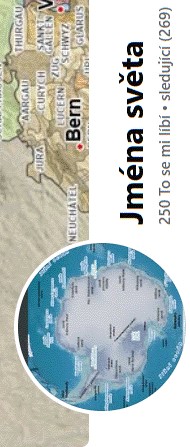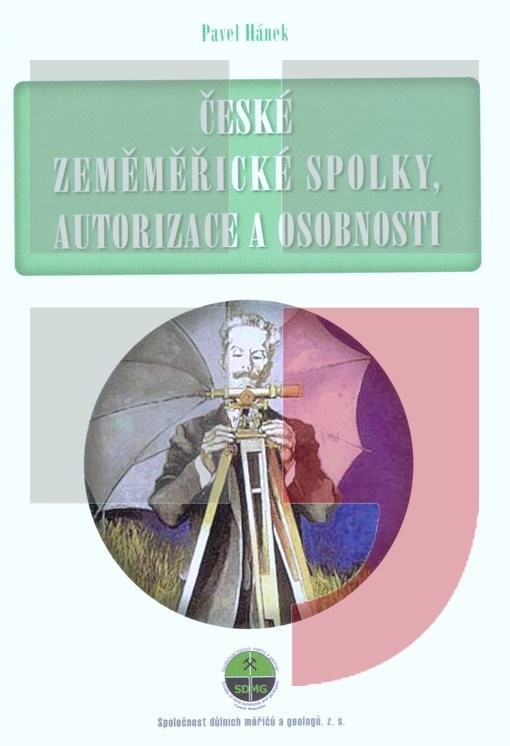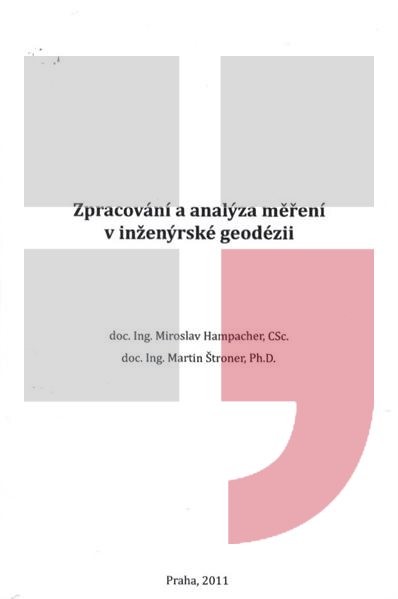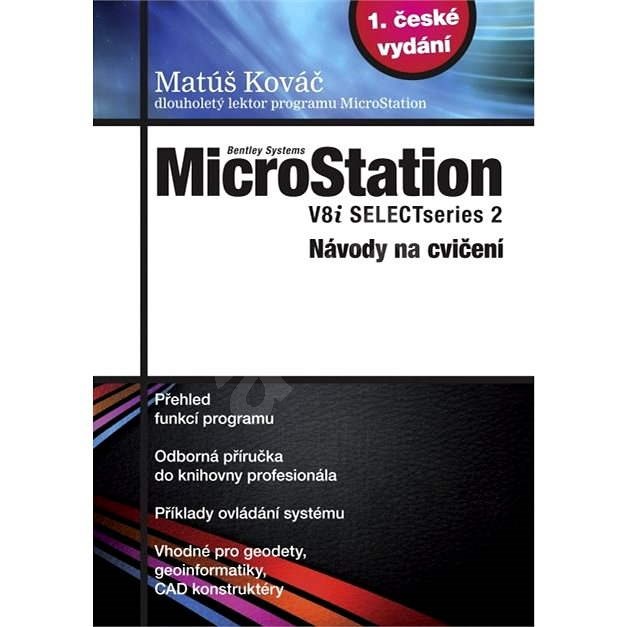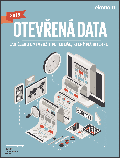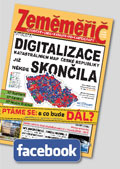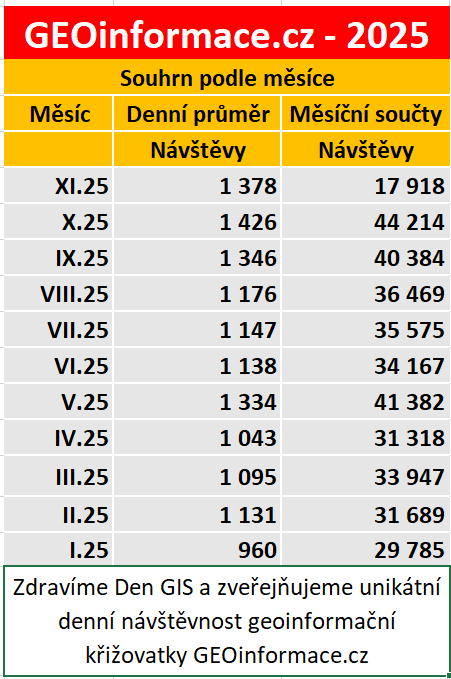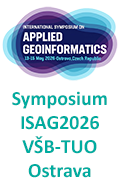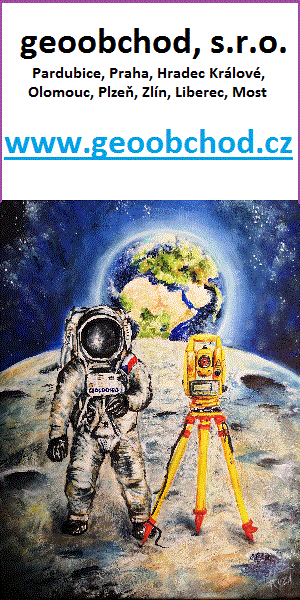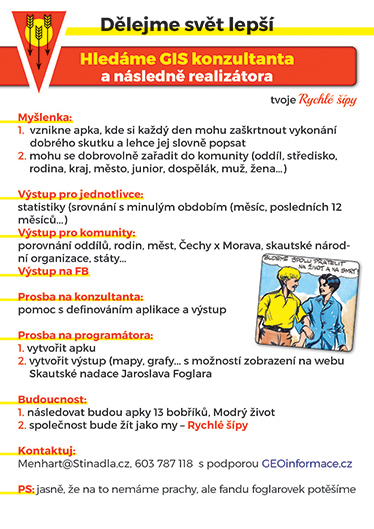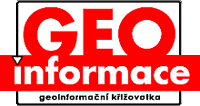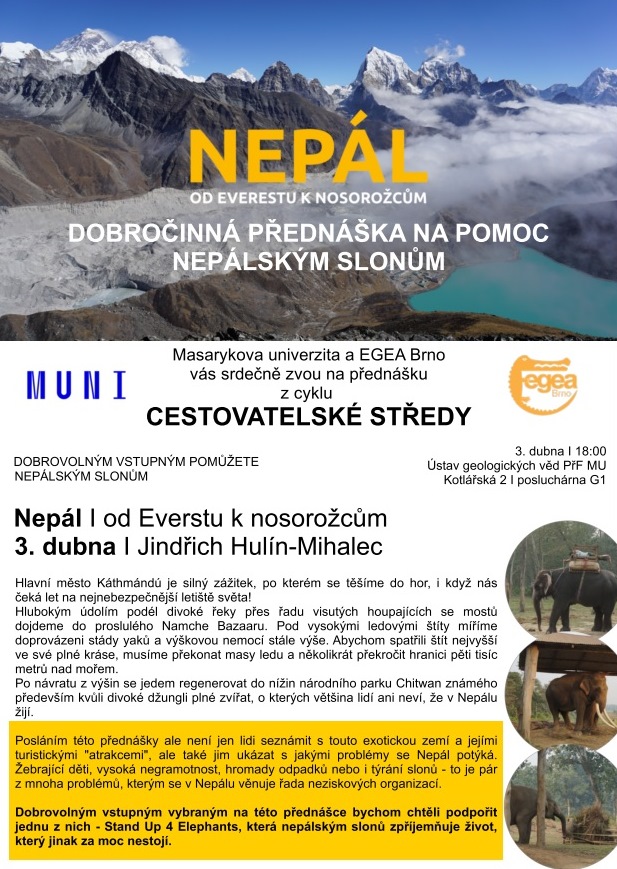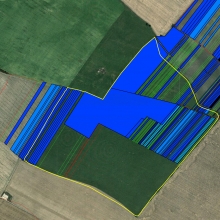zprávy
zdroje zpráv:vedoucí právního oddělení II.
3.4.2019 9:21 ČÚZK - předpisy a opatření Katastrální úřad pro hlavní město Prahu - Katastrální pracoviště Prahavypisuje výběrové řízení na místo
vedoucí právního oddělení II.
20190403-Akturalizovaný seznam
3.4.2019 9:19 ČÚZK - předpisy a opatření Český úřad zeměměřický a katastrální zveřejnil novou aktualitu: Aktualizovaný seznam úředně oprávněných zeměměřických inženýrů.20190403-Akturalizovaný seznam
3.4.2019 9:19 ČÚZK - předpisy a opatření Český úřad zeměměřický a katastrální zveřejnil novou aktualitu: Aktualizovaný seznam úředně oprávněných zeměměřických inženýrů.Geograf - Pardubice
3.4.2019 8:50 ČÚZK - volná místa Zeměměřický úřad vypisuje výběrové řízení na místo Geograf - PardubiceGeograf - Pardubice
3.4.2019 8:50 Zeměměřický úřad Zeměměřický úřadvypisuje výběrové řízení na místo
Geograf - Pardubice
Geograf - Pardubice
3.4.2019 8:50 ČÚZK - předpisy a opatření Zeměměřický úřadvypisuje výběrové řízení na místo
Geograf - Pardubice
Origami pro geografy
3.4.2019 8:05 GISportal.cz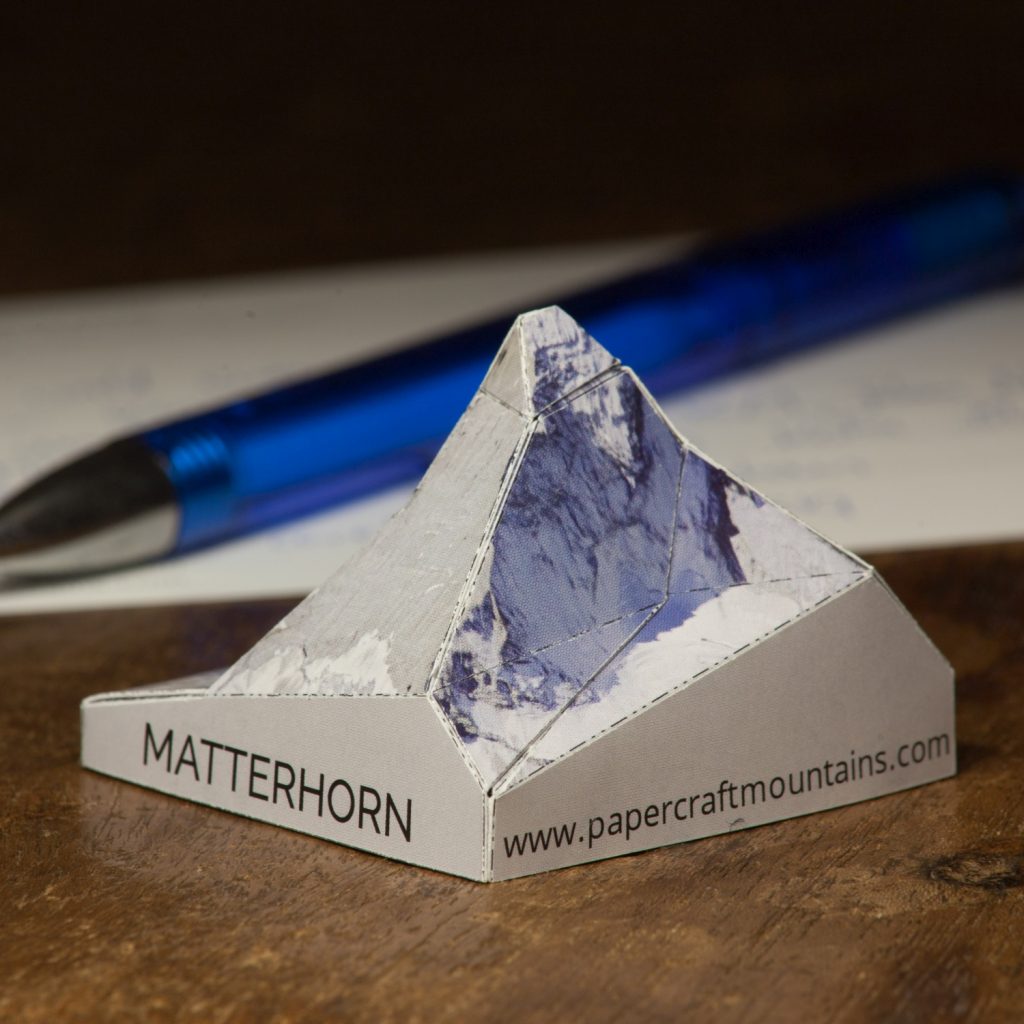
Baví vás origami, nebo alespoň skládání vlaštovek? Jakoba a Johanna ano, a tak vymysleli způsob, jak z DEMu udělat TIN a ten převést na origami – tak vznikl projekt PaperCraftMountains. Podobným způsobem tak vytvořili skládačky několika světových velehor – např. Uluru či Matterhorn. To, že jejich postup má vědecký základ dokazují nejen ve své prezentaci, […]
The post Origami pro geografy appeared first on GISportal.cz.
Space race hackathon - pozvánka
3.4.2019 7:00 Česká asociace pro geoinformaceVe dnech 26. až 28. dubna 2019 se v Olomouci na Katedře geoinformatiky UPOL koná Space Race Hackathon.
Přijďte si zahackovat na vesmírný hackathon v Olomouci a oslavit tak s námi 50. výročí jedné z nejodvážnějších misí v historii - Moon Landing.
Jak? Během 48 hodin vytvořte vlastní projekt na některou z výzev, třeba právě na moon challenge, přesvědčte porotu na
Můj kousek Země
3.4.2019 2:00 Cenia - Katalog metadat ČR - INSPIRE Databáze prací výtvarné soutěže pro děti a mládež Můj kousek Země, kterou pořádá Česká geologická služba a Ministerstvo životního prostředí. Soutěž má tradičně za cíl akcentovat důležitost ochrany životního prostředí a přibližovat význam věd o Zemi. První ročník soutěže se uskutečnil v roce 2007 a byl připraven v souvislosti s Mezinárodním rokem planety Země vyhlášeným Mezinárodní unií geologických věd a organizací UNESCO.Modelová pole koncentrací
3.4.2019 2:00 Cenia - Katalog metadat ČR - INSPIRE Mapová služba prezentuje hlavní grafické výstupy projektu Modelové hodnocení kvality ovzduší na území hl. m. Prahy. Představují modelová pole koncentrací škodlivin. Polygony jsou odvozeny z hodnot vypočtených v síti referenčních bodů s krokem 300 x 250m. Pro IPR Praha zpracovala firma ATEM s.r.o. Poslední aktualizace: duben 2019. Prezentovaný stav: 2017GEOPROCESSINGOVÁ SLUŽBA Esri ArcGIS Server – SlopeRange DMR 5G
3.4.2019 2:00 Cenia - Katalog metadat ČR - INSPIRE Geoprocessingová služba SlopeRange DMR5G je určena ke zjištění míst (částí území) v rámci zadaného území, které odpovídají zadanému intervalu sklonitosti nad digitálním modelem reliéfu 5. generace převedeným do rastrového formátu s rozlišením 2 m. Výsledkem je poloha míst (částí území), které odpovídají stanovenému rozsahu sklonitosti v rámci zadaného území.Emise z dopravy
3.4.2019 2:00 Cenia - Katalog metadat ČR - INSPIRE Emise z liniových zdrojů (z automobilové dopravy) Emise vypočteny v rámci aktualizace Modelování kvality ovzduší. Využity podklady TSK (intenzita dopravy) a IPR (geografické podklady). Pro IPR Praha zpracovala firma ATEM s.r.o. Poslední aktualizace: duben 2019. Prezentovaný stav: 2017Imise v referenčních bodech
3.4.2019 2:00 Cenia - Katalog metadat ČR - INSPIRE Služba obsahuje hlavní výstup projektu Modelové hodnocení kvality ovzduší hl. m. Prahy. Zobrazuje modelově vypočtené hodnoty koncentrací (vztažené k existujícím limitům znečištění ovzduší) sledovaných škodlivin (PM10, PM2,5, SO2, NO2, NOx, CO, benzen, B[a]P, O3) a podíly jednotlivých skupin zdrojů na průměrných ročních koncentracích těchto škodlivin v síti 8 647-mi referenčních bodů (síť s krokem 300 x 250m). Pro IPR Praha zpracovala firma ATEM s.r.o. Poslední aktualizace: duben 2019 Prezentovaný stav: 2017Speed versus Throughput: How to Gain Productivity in Scanning
3.4.2019 0:55 GISCafe.com Webcasts-WebinarsPozvánka na přednášku "Nepál - od Everestu k nosorožcům"
3.4.2019 0:00 Geografický ústav MUVíce na:
https://cestovatelskestredy.webnode.cz/
https://www.facebook.com/cestovatelskestredyPrF/
Omezení provozu Pobočky Opava
3.4.2019 0:00 Státní pozemkový úřad Z provozních důvodů bude ve čtvrtek 4. 4. 2019 omezen provoz Pobočky Opava (KPÚ pro Moravskoslezský kraj).ResilientGrid to Provide Software for NERC's Situational Awareness Initiative Covering North America's Bulk Power System
2.4.2019 23:23 GISCafe.com Webcasts-Webinars AUSTIN, Texas, April 2, 2019 — (PRNewswire) — ResilientGrid, Inc. announced today that the North American Electric Reliability …Drone Delivery Canada to Pursue Eight Additional Business Verticals of Delivery by Drone
2.4.2019 23:23 GISCafe.com Webcasts-Webinars TORONTO, April 2, 2019 — (PRNewswire) — Drone Delivery Canada 'DDC or the Company' (TSX.V:FLT, OTC:TAKOF), is pleased to announce as the …Accela Supports Program to Drive Digital Transformation in Cities Through Public-Private Technology Solutions
2.4.2019 23:23 GISCafe.com Webcasts-Webinars Accela joins the Startup in Residence program to support tech startups improving public services across the United StatesSAN RAMON, Calif., April 2, …
ČÚZK otevírá další data
2.4.2019 18:29 GISportal.cz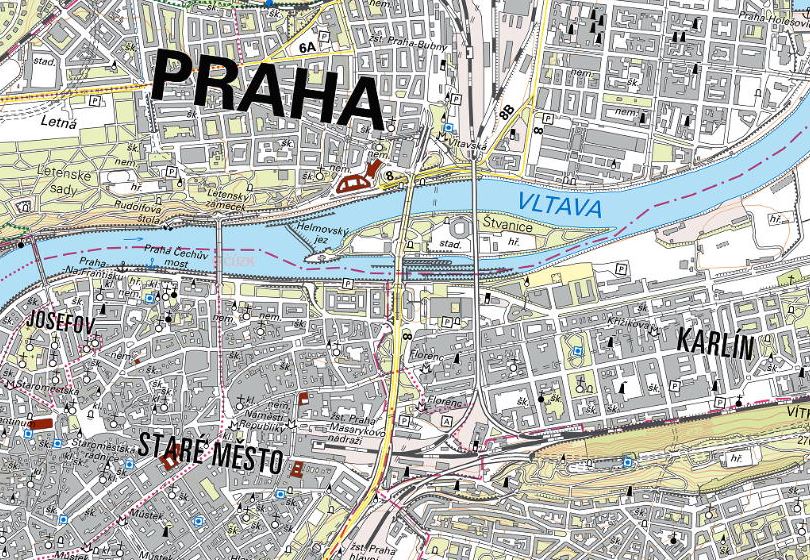
Český úřad zeměměřický a katastrální, který býval v posledních letech pod palbou kritiky za to, že svá data poskytuje za velmi vysokou cenu, se nyní vydává opačným směrem. Po zpřístupnění dat z Registru územní identifikace, adres a nemovitostí (RÚIAN) nyní otevírá také datové sady Data50 a Data200. Tyto datové sady obsahují 59, resp. 50 typů […]
The post ČÚZK otevírá další data appeared first on GISportal.cz.
CoreLogic Reports February Home Prices Increased by 4 Percent Year Over Year
2.4.2019 17:38 GISCafe.com Webcasts-Webinars Annual change by state ranged from a 10.2 percent high in Idaho toa -1.7 percent low in North Dakota
The HPI Forecast …
DATAMARK Expands Public Safety Team Expertise with the Appointment of Sandy Dyre
2.4.2019 17:38 GISCafe.com Webcasts-Webinars PITTSBURGH, April 02, 2019 (GLOBE NEWSWIRE) -- DATAMARK, a team of public safety geographic information services (GIS) experts and the go-to …Kratos Establishes Another International Operating Range Site, Adding to its Substantial List of Qualified Operating Sites on its Target Drone Resume
2.4.2019 17:38 GISCafe.com Webcasts-Webinars SAN DIEGO, April 02, 2019 (GLOBE NEWSWIRE) -- Kratos Defense & Security Solutions, Inc.(NASDAQ:KTOS), a leading National Security Solutions …Suntuity AirWorks Launches US Dealer Program for Drone Services
2.4.2019 17:38 GISCafe.com Webcasts-Webinars By utilizing Suntuity's global financing, technology and procurement capabilities, Suntuity AirWorks is well-positioned to service dealers with …Skycatch Announces enterprise-wide agreement with DPR
2.4.2019 17:38 GISCafe.com Webcasts-Webinars SAN FRANCISCO, April 2, 2019 — (PRNewswire) — Skycatch is announcing today that DPR Construction has signed an enterprise-wide agreement …Loveland Innovations Enhances Claim Adjuster Safety, Efficiency for Western Reserve Group
2.4.2019 17:38 GISCafe.com Webcasts-Webinars PLEASANT GROVE, Utah, April 2, 2019 — (PRNewswire) — Loveland Innovations®, maker of advanced data gathering and AI analysis …DeepMap Welcomes Hermann Kaess, Former Bosch Executive, to Technical Advisory Board
2.4.2019 17:38 GISCafe.com Webcasts-Webinars PALO ALTO, Calif., April 2, 2019 — (PRNewswire) — DeepMap today announced that Hermann Kaess, former CEO of Bosch Korea and EVP of …Využití mobilního laserového skeneru GeoSLAM ZEB HORIZON
2.4.2019 15:44 mensuroMobilní laserové skenování začíná být efektivním nástrojem pro rychlý a přesný sběr prostorových dat nejenom v geodézii, ale také ve stavebnictví, architektuře a BIM. Na našich specializovaných stránkách 3Dtechnologie se snažíme publikovat zajímavé příklady použití mobilního laserového skenování, které získalo s příchodem nového laserového skeneru GeoSLAM ZEB HORIZON rozšířené možnosti. „Dokázali jsme zredukovat potřebný čas na měření ze čtyř dnů […]
The post Využití mobilního laserového skeneru GeoSLAM ZEB HORIZON appeared first on Mensuro.cz.
Ministerstvo podpoří výzkum a inovace v dopravě dvěma miliardami, žádat o ně bude možné od června
2.4.2019 15:16 Český Kosmický PortálChytrá dopravní infrastruktura, provoz autonomních vozidel i navigační a družicové systémy. To jsou jen některé z oblastí, které ministerstvo dopravy podpoří v příštích letech až dvěma miliardami korun díky novému programu DOPRAVA 2020+. Materiál v pondělí schválila vláda a otevřela tím cestu pro všechny potenciální žadatele, kteří se zabývají výzkumnou činností v dopravě.
20190402 - Objednávání osobních návštěv vyhotovitelů a ověřovatelů na KP e-mailem
2.4.2019 12:07 ČÚZK /Urady/Katastralni-urady/Katastralni-urady/Katastralni-urad-pro-Ustecky-kraj/Katastralni-pracoviste/KP-Usti-nad-Labem/O-uradu/Aktuality/20190402-Objednavani-osobnich-navstev-vyhotovite20190402 - Objednávání osobních návštěv vyhotovitelů a ověřovatelů na KP e-mailem
2.4.2019 12:07 ČÚZK - předpisy a opatření Katastrální úřad pro Ústecký kraj - Katastrální pracoviště Ústí nad Labem zveřejnil novou aktualitu: Prosíme vyhotovitele a ověřovatele geometrickým plánů, aby při osobních návštěvách na katastrálním pracovišti se vždy objednávali na adrese kp-UstinadLabem-objednavky@cuzk.cz a vyčkali potvrzení jimi navrhované schůzky. Toto opatření by mělo zajistit vyšší komfort při vašem odbavení.E-GNSS key to increasing capacity, efficiency and sustainability in European rail networks
2.4.2019 11:13 European GNSS Agency
Stakeholders from the space and rail sectors joined with regulators and government representatives to review the benefits and make a point on the way forward for European Global Navigation Satellite Systems (EGNSS), Galileo and EGNOS within railway applications in Europe. The two-day Space for Innovation in Rail event on 18 – 19 March 2019 in Vienna was jointly organised by the Austrian Ministry of Transport, Innovation and Technology, the European GNSS Agency (GSA), the European Union Agency for Railways (ERA), and the Shift2Rail Joint Undertaking (S2R JU) and highlighted the important role of satellite-based positioning technology for the future of the rail sector.
This first of a kind event was designed for participants to learn from a unique line up of speakers and experts, be inspired by space solutions for a safer, more efficient and sustainable rail in Europe, connect with the entire rail community, and share challenges and success stories.
Opening the meeting on behalf of Norbert Hofer, Minister of Transport, Innovation and Technology, Ingolf Schädler, Deputy Director General for Innovation and Telecommunication at the Ministry emphasised the importance of the rail system and rail industry to Austria and praised Galileo describing it as “a true European success story!”
Elisabeth Werner of European Commission DG MOVE said that “It was high time for a rail space conference.” She thought GNSS has the potential to make rail systems less complex, cheaper, safer and more responsive. But the big question is how to implement? There was a need to define future system architecture and accelerate the move from laboratory to track. A sound business case was required, and the right incentives put in place. “We can really reshape the railway system with Galileo and EGNOS and enhance the added value,” she concluded.
“You can count on GNSS in Europe to provide concrete global opportunities for products and services,” said Matthias Petschke from European Commission DG GROW. He reassured the listening rail community that both EGNOS and Galileo systems were here to stay for the long term saying: “With the ICAO (the international civil aviation organisation), we committed to at least 20 years, as these technologies become an essential part of our industrial and economic structure.”
He was also clear on governance with respect to EGNSS. “EGNOS & Galileo are and will stay 100% in public hands: the EU funds them, the Commission is responsible, and we delegate tasks to the European Space Agency and the GSA to upgrade the infrastructure and make sure we meet the user needs,” he stated. “Space technology reduces cost and enhances performance.”
Agency viewpoint
These themes were continued by the agencies that had organised the event. Josef Doppelbauer, Executive Director, ERA stressed the need to decarbonise the transport system and saw the adoption of space-based technologies as a “unique opportunity to take cost out of the industry and simplify infrastructure.” He also noted that innovation was more quickly absorbed in other transport sectors such as automotive. He saw interoperability and standardisation as the preconditions for true pan-European innovation in the sector.
Carlo des Dorides, Executive Director, GSA said that the questions was “not if GNSS will provide a solution, but rather ‘how’?” He noted that over 50% of road tolls in Europe were now enabled by GNSS and that the European GNSS Galileo was increasingly becoming the benchmark system with its promise of multi-frequency services enabling one metre or better accuracy.
EGNOS is already a global success providing services for aviation and could deliver the same for rail. However, questions such as who will certify the services needed to be answered. Des Dorides thought that bringing the experience from other sectors could ease adoption in rail. “The commitment of the GSA to supporting the rail sector is clear and it is reassuring to see all stakeholders eager to discuss how to leverage the potential of Galileo and EGNOS for the future of rail transport in Europe. Like space, the next generation of rail operations will know no borders!” he stated.
Carlo Borghini, Executive Director of the Shift2Rail JU praised the ongoing collaboration with the GSA. He mentioned that the key to increasing capacity and efficiency is boosting the quality of train localisation. He emphasised the need to look forward and accelerate results and implementation, while ensuring safety.
Over the two days of the Space for Innovation in Rail event participants learnt about the EGNSS experience in the aviation sector, the experience with GNSS use for the Positive Train Control system being deployed in the USA where some 20,000 locomotives are being equipped with GNSS receivers, and how GNSS can be integrated in other safety critical transport modes. Two panel discussions examined the business challenges for GNSS railway positioning and how to accelerate the move from development to deployment for satellite technology in the rail sector.
Results and prospects from a range of research, innovation and demonstration projects were also presented.
Challenges and next steps
While GNSS could be a game changer for rail in terms of connectivity, cost efficiency and safety, any implementation has to also ensure interoperability of national networks. In addition, all new rail systems must be certified and there was a question about who would do this and how the new electronic systems might be financed. Carlo des Dorides noted that the GSA has supported projects that co-financed avionics updates.
Opening the second day, Mark Topal, Chief Technical Officer of ÖBB Holding AG though that the “key success factors for successful and rapid implementation would be willingness to pioneer, global collaboration, passion, enthusiasm, and optimism.” He saw the challenges as reducing rail system costs by a factor of ten, increasing system capacity with smart technology and meeting the mixed traffic challenge where slow freight and higher speed passenger services shared tracks. A particular issue was to solve the train integrity challenge. If all the challenges could be solved, he concluded: “That’s one small step for rail, and one giant leap for mobility!”
Josef Doppelbauer gave the regulators perspective. He saw the integration of GNSS technologies as a major part of rail’s contribution to saving the planet by providing sustainable mobility and transport essential for our society and economy. He noted that in terms of CO2 emissions per passenger kilometre train travel was already ten times better than air travel.
“Satellite based technology can contribute a massive saving for rail signalling systems, GNSS can remove the need for track side infrastructure, while delivering massive data redundancy, which will influence the safety case,” he said. “GNSS has the potential to revolutionise the European Railway Traffic Management System (ERTMS).
Taking the global perspective on GNSS adoption for safety critical railway applications, Jean-Pierre Loubinoux, Director General of the International Union of Railways (UIC) welcomed the event initiative and the developments outlined, while emphasising the need to the keep elements of cybersecurity and standardisation.
A wide-ranging panel discussion on the second day sought solutions to accelerate deployment of GNSS technologies and included contributions from rail operators, equipment suppliers and GNSS experts. Thomas Petraschek from OBB noted that his company is testing GNSS solutions for multiple non-safety critical applications with a main focus on asset management and predictive maintenance and confirmed that this future solution will benefit also from Galileo signals.
Within the discussion, Michel Ruesen of EEIG EUG, a group of large railway companies working to deploy ERTMS, pointed out the reference Command Control and Signalling (CCS) architecture as one of the main tools for future development and inclusion of new technologies into the European Train Control System (ETCS).
An ongoing debate within the rail community relates to solutions based on the virtual balise concept or a multi-sensor positioning platform approach. The panellists agreed that the focus should be on including the virtual balise concept in ETCS as a non-intrusive solution that can facilitate interoperability as a first step. The more advanced multi-sensor positioning platform should be further developed to potentially gain greater benefits from GNSS in the future than with only emulation of the current physical balise system through GNSS.
Closing the event Josef Doppelbauer reiterated the case for space-based systems in the rail sector saying: “We have a massive opportunity. Let’s grab it and ensure that rail is the sustainable backbone of our future transport system.”
Carlo des Dorides fully agreed and hoped the event would become “the first of a series enabling greater sharing of experience.”
Carlo Borghini supported this view saying: “Space technology is about collaboration across sectors.” He looks forward to the development along the joint GNSS in Rail Signalling roadmap over the next 18 months and a second SpaceInRail event to review progress.
Media note: This feature can be republished without charge provided the European GNSS Agency (GSA) is acknowledged as the source at the top or the bottom of the story. You must request permission before you use any of the photographs on the site. If you republish, we would be grateful if you could link back to the GSA website (http://www.gsa.europa.eu).
OGC invites you to participate in its SCIRA Smart Cities Public Safety Interoperability Pilot
2.4.2019 10:38 GISCafe.com Webcasts-Webinars Pilot will leverage OGC standards, IoT sensors, geospatial framework data, and SCIRA design patterns to design and prototype interoperable Smart City …Stopy prachových vírů na Marsu
2.4.2019 10:31 Český Kosmický PortálVětry na Marsu jsou zodpovědné za myriádu úkazů rozprostřených na celém povrchu planety - včetně tmavých dun a vláknitých pruhů na tomto snímku ze sondy ESA Mars Express.
ArcGIS 10.7
2.4.2019 10:05 ARCDATAZ portálu My Esri si již můžete stáhnout nejnovější verzi softwaru ArcGIS 10.7, a proto vám přinášíme přehled nejdůležitějších novinek.
ArcMap
V aplikaci ArcMap proběhly opravy různých drobných chyb a do některých geoprocessingových nástrojů přibyly i nové parametry. Nové nastavení geoprocessingového prostředí Cell Size Projection Method například určuje, jakým způsobem se bude určovat velikost pixelu při přepočtu rastru do jiného kartografického zobrazení.
ArcGIS Pro
O novinkách ArcGIS Pro 2.3 jsme vás informovali v samostatném článku. Rádi bychom však upozornili, že aplikaci si můžete aktualizovat prostřednictvím opravného balíčku ArcGIS Pro 2.3.2.
ArcGIS Enterprise
ArcGIS Enterprise 10.7 přináší vylepšení ve správě dat, publikování služeb, spolupráci portálů, webovém mapování, správě obsahu a uživatelů a mnoho dalšího. Výkon serveru (zejména po stránce využité operační paměti) zlepší sdílené instance, které může využívat několik služeb zároveň – ne pouze jediná jako doposud. Mezi novinky ve správě dat paří například zpřístupnění domén s kódovanými hodnotami v hostovaných feature vrstvách. Na webových mapách mohou být definovány oblasti pro stažení do offline aplikací. Pro vizualizaci jsou k dispozici nové styly umožňující zobrazit vztah mezi dvěma proměnnými, vektorové dlaždice podporují optimalizovaný formát TPKX a technologie webhooks zajišťuje odeslání notifikací (zpráv, e-mailů), pokud se stane něco specifického.
Nesmíme zapomenout ani na důležitou změnu v licencování (podobně jako na ArcGIS Online), která umožňuje lépe přizpůsobit uživatelské licence skutečnému využití ArcGIS Enterprise.
Novinkou je i prostředí pro spouštění skriptů v jazyku Python – ArcGIS Notebook Server. K dispozici jsou například knihovny ArcGIS API for Python, ArcPy a open source knihovny pro statistické výpočty a strojové učení. Pro snadný začátek mohou uživatelé navíc využít širokou nabídku ukázkových skriptů.
Celý soupis novinek naleznete na stránkách Esri:
Konečně parádní screeny na mobilní telefony pro geonadšence
2.4.2019 8:01 GISportal.cz
O finské společnosti Alvar Carto jsme již psali a to především s ohledem na jejich krásné nástěnné plakáty zobrazující různý města světa. Nyní však tato společnost přišla s generátorem mapových screenů pro mobilní telefony a to zdarma. Uživatel si může zvolit ze čtyř barevných schémat – černá, světle či tmavě šedá a hnědá. Dále si nastaví […]
The post Konečně parádní screeny na mobilní telefony pro geonadšence appeared first on GISportal.cz.
Konečně parádní screeny na mobilní telefony pro geonadšence
2.4.2019 8:01 GISportal.cz
O finské společnosti Alvar Carto jsme již psali a to především s ohledem na jejich krásné nástěnné plakáty zobrazující různá města světa. Nyní však tato společnost přišla s generátorem mapových screenů pro mobilní telefony a to zdarma. Uživatel si může zvolit ze čtyř barevných schémat – černá, světle či tmavě šedá a hnědá. Dále si nastaví […]
The post Konečně parádní screeny na mobilní telefony pro geonadšence appeared first on GISportal.cz.
NC State Center for Geospatial Analytics Faculty Position
2.4.2019 7:32 A friendly reminder that we are still accepting applications for an open teaching faculty position with the Center for Geospatial Analytics at NC State University. Initial review of applications will begin this week, but the position will remain open until filled so if you or someone you know is interested, please apply as soon as possible […]Undergraduate Research Fellow positions at the NSF Spatiotemporal Innovation Center (STC)
2.4.2019 7:28 NSF REU Fellow Opportunities, 7 weeks from June 2019 to August 2019 The NSF Spatiotemporal Innovation Center (STC) is looking for several undergraduate research assistants to serve as NSF REU Fellows from June 2019 to August 2019. They will potentially work at George Mason University Site (Fairfax, VA), Harvard University site (Cambridge, MA), or University […]UIUC’s CyberGIS Center is recruiting multiple (Sr.) Research Programmers
2.4.2019 7:27 The ad and application instruction are available on this webpage: https://jobs.illinois.edu/research-positions/job-details?jobID=108303&job=research-programmer-senior-research-programmer-geography-and-geographic-information-science-108303. These (Sr.) Research Programmers are expected to join a dynamic team to make significant contributions to innovating big-data and high-performance geospatial software. The positions are full-time, permanent, and eligible for attractive benefits. Application deadline is April 3, 2019.Znepokojenie a rozhorčenie nad zamýšľaným zrušením študijného odboru GaK na Slovensku
2.4.2019 2:04 Zeměměřič KGK v spolupráci s ostatnými profesijnými organizáciami spracovala Spoločné stanovisko...Topografická databáze České republiky (Data200) - vrstva Vegetace
2.4.2019 2:00 Cenia - Katalog metadat ČR - INSPIRE Topografická databáze České republiky (Data200) - vrstva Vegetace. Minimální polohová přesnost je 100 m a podrobnost odpovídá měřítku 1:200 000. Vrstva Vegetace obsahuje vinice, chmelnice, sady a lesy.GEOPROCESSINGOVÁ SLUŽBA Esri ArcGIS Server – Visibility DMP 1G
2.4.2019 2:00 Cenia - Katalog metadat ČR - INSPIRE Geoprocessingová služba Visibility_DMP1G je určena pro analýzy viditelnosti nad digitálním modelem povrchu 1. generace převedeným do rastrového formátu s rozlišením 2 m. Nástroj slouží ke zjištění viditelného území, tedy částí povrchu, které jsou viditelné ze zadaného pozorovacího stanoviště do požadované vzdálenosti. K provedení analýzy je nutné vybrat polohu pozorovacího stanoviště, specifikovat jeho výšku nad povrchem a zadat vzdálenost, do jaké se má provést výpočet. Výsledkem je pole viditelnosti, tedy části povrchu (DMP 1G), které jsou viditelné v rámci zadaného území.Bulletin stanic České regionální seismické sítě ČRSS
2.4.2019 2:00 Cenia - Katalog metadat ČR - INSPIRE Čtení seismických jevů (zemětřesení, důlních otřesů, explozí) v České republice i ve světě ze seismických stanic České regionální seismické sítě (ČRSS). Data od r. 1976 jsou uspořádána v měsíčních souborech. Roční bulletiny z období 1908 - 1954 jsou dostupná v pdf formátu.GEOPROCESSINGOVÁ SLUŽBA Esri ArcGIS Server – Visibility DMR 4G
2.4.2019 2:00 Cenia - Katalog metadat ČR - INSPIRE Geoprocessingová služba Visibility_DMR4G je určena pro analýzy viditelnosti nad digitálním modelem reliéfu 4. generace převedeným do rastrového formátu s rozlišením 5 m. Nástroj slouží ke zjištění viditelného území, tedy částí terénu, které jsou viditelné ze zadaného pozorovacího stanoviště do požadované vzdálenosti. K provedení analýzy je nutné vybrat polohu pozorovacího stanoviště, specifikovat jeho výšku nad terénem a zadat vzdálenost, do jaké se má provést výpočet. Výsledkem je pole viditelnosti, tedy části terénu (DMR 4G), které jsou viditelné v rámci zadaného území.Bulletin stanic České regionální seismické sítě ČRSS
2.4.2019 2:00 Cenia - Katalog metadat ČR - INSPIRE Čtení seismických jevů (zemětřesení, důlních otřesů, explozí) v České republice i ve světě ze seismických stanic České regionální seismické sítě (ČRSS). Data jsou uspořádána v měsíčních souborech.Magnetotelurická měření
2.4.2019 2:00 Cenia - Katalog metadat ČR - INSPIRE Digitální záznamy variací horizontálních elektrických a magnetických polí a vertikální magnetické složky z mobilních stanic v rámci magnetotelurických kampaní na území České republiky a Slovenska.GEOPROCESSINGOVÁ SLUŽBA Esri ArcGIS Server – AspectRange DMR 5G
2.4.2019 2:00 Cenia - Katalog metadat ČR - INSPIRE Geoprocessingová služba AspectRange_DMR5G je určena ke zjištění míst (částí území) v rámci zadaného území, které odpovídají zadanému intervalu orientace nad digitálním modelem reliéfu 5. generace převedeným do rastrového formátu s rozlišením 2 m. Výsledkem je poloha míst (částí území), které odpovídají stanovenému rozsahu orientace v rámci zadaného území.Modelová pole koncentrací
2.4.2019 2:00 Cenia - Katalog metadat ČR - INSPIRE Mapová služba prezentuje hlavní grafické výstupy projektu Modelové hodnocení kvality ovzduší na území hl. m. Prahy. Představují modelová pole koncentrací škodlivin. Polygony jsou odvozeny z hodnot vypočtených v síti referenčních bodů s krokem 300 x 250m. Pro IPR Praha zpracovala firma ATEM s.r.o. Poslední aktualizace: duben 2018 Prezentovaný stav: 2017GEOPROCESSINGOVÁ SLUŽBA Esri ArcGIS Server – SlopeRange DMR 5G
2.4.2019 2:00 Cenia - Katalog metadat ČR - INSPIRE Geoprocessingová služba ElevationRange_DMR5G je určena ke zjištění míst (částí území) v rámci zadaného území, které odpovídají zadanému intervalu sklonitosti nad digitálním modelem reliéfu 5. generace převedeným do rastrového formátu s rozlišením 2 m. Výsledkem je poloha míst (částí území), které odpovídají stanovenému rozsahu sklonitosti v rámci zadaného území.Topografická databáze České republiky (Data200) - vrstva Různé objekty
2.4.2019 2:00 Cenia - Katalog metadat ČR - INSPIRE Topografická databáze České republiky (Data200) - vrstva Různé objekty. Minimální polohová přesnost je 100 m a podrobnost odpovídá měřítku 1:200 000. Vrstva Různé objekty obsahuje budovy, vysílače, doly, lomy, produktovody, úložiště, haldy, zpracovatelské závody, tlakové čerpací stanice, pevnosti a opevnění, zábavní parky, závodiště, památníky, zříceniny, národní parky a přírodní rezervace, elektrické vedení vysokého napětí, elektrárny a další.GEOPROCESSINGOVÁ SLUŽBA Esri ArcGIS Server – SlopeRange DMR 4G
2.4.2019 2:00 Cenia - Katalog metadat ČR - INSPIRE Geoprocessingová služba SlopeRange_DMR4G je určena ke zjištění míst (částí území) v rámci zadaného území, které odpovídají zadanému intervalu sklonitosti nad digitálním modelem reliéfu 4. generace převedeným do rastrového formátu s rozlišením 5 m. Výsledkem je poloha míst (částí území), které odpovídají stanovenému rozsahu sklonitosti v rámci zadaného území.GEOPROCESSINGOVÁ SLUŽBA Esri ArcGIS Server – SkyLineGraph DMR 5G
2.4.2019 2:00 Cenia - Katalog metadat ČR - INSPIRE Geoprocessingová služba SkyLineGraph_DMR5G je určena pro analýzy viditelnosti nad digitálním modelem reliéfu 5. generace převedeným do rastrového formátu s rozlišením 2 m. Služba je určena ke zjištění linie zakrytí obzoru dělící viditelný obzor od neviditelného (zakrytého) obzoru v rámci zadaného území. K provedení analýzy je nutné zadat polohu a výšku pozorovacího stanoviště nad terénem (DMR 5G) a vzdálenost, do které se má provést výpočet. Výsledná linie zakrytí obzoru jasně vymezuje hranici viditelného území od území zakrytého terénními překážkami (tvary reliéfu a terénními nerovnostmi). Z výsledné tabulky je možné sestavit graf zakrytí obzoru, který ukazuje míru zakrytí obzoru v závislosti na azimutu a zadané vzdálenosti.Česká regionální seismická síť ČRSS
2.4.2019 2:00 Cenia - Katalog metadat ČR - INSPIRE Seismické digitální záznamy stanic České regionální seismické sítě (ČRSS): Tato síť se skládá z dvaceti širokopásmových seismických observatoří, které jsou umístěny na území České republiky. Seismické stanice provozují tyto geovědní instituce: Geofyzikální ústav AV ČR. (10 stanic), Ústav struktury a mechaniky hornin AV ČR. (3 stanice), Ústav fyziky Země Masarykovy univerzity Brno (4 stanice), Ústav Geoniky AV ČR Ostrava (1 stanice), Výzkumný ústav goegrafie, topografie a kartografie Zdiby (1 stanice), Univerzita Karlova v Praze (1 stanice). Interpretace zemětřesení a dalších seismických jevů z těchto stanic jsou dostupná v měsíčních bulletinech od r. 1976.GEOPROCESSINGOVÁ SLUŽBA Esri ArcGIS Server – ElevationMaxMin DMR 4G
2.4.2019 2:00 Cenia - Katalog metadat ČR - INSPIRE Geoprocessingová služba ElevationMaxMin_DMR4G je určena ke zjištění míst s maximální/minimální nadmořskou výškou (včetně hodnot) v rámci zadaného území (v rámci zadaného polygonu) nebo po zadané linii terénu nad digitálním modelem reliéfu 4. generace převedeným do rastrového formátu s rozlišením 5 m. Výsledkem je poloha míst s maximální a minimální hodnotou nadmořských výšek včetně mezních hodnot nadmořských výšek v rámci zadaného území.Topografická databáze České republiky (Data200) - vrstva Popis
2.4.2019 2:00 Cenia - Katalog metadat ČR - INSPIRE Topografická databáze České republiky (Data200) - vrstva Popis. Minimální polohová přesnost je 100 m a podrobnost odpovídá měřítku 1:200 000. Vrstva Popis obsahuje názvy větších geografických oblastí a geomorfologických celků.GEOPROCESSINGOVÁ SLUŽBA Esri ArcGIS Server – ElevationMaxMin DMR 5G
2.4.2019 2:00 Cenia - Katalog metadat ČR - INSPIRE Geoprocessingová služba ElevationMaxMin_DMR5G je určena ke zjištění míst s maximální/minimální nadmořskou výškou (včetně hodnot) v rámci zadaného území (v rámci zadaného polygonu) nebo po zadané linii terénu nad digitálním modelem reliéfu 5. generace převedeným do rastrového formátu s rozlišením 2 m. Výsledkem je poloha míst s maximální a minimální hodnotou nadmořských výšek včetně mezních hodnot nadmořských výšek v rámci zadaného území.Katalogy zemětřesení v západních Čechách
2.4.2019 2:00 Cenia - Katalog metadat ČR - INSPIRE Katalogy zemětřesení v západních Čechách ze seismických stanic lokální seismické sítě WEBNET. Data jsou uspořádána v ročních souborech.GEOPROCESSINGOVÁ SLUŽBA Esri ArcGIS Server – AspectRange DMR 4G
2.4.2019 2:00 Cenia - Katalog metadat ČR - INSPIRE Geoprocessingová služba AspectRange_DMR4G je určena ke zjištění míst (částí území) v rámci zadaného území, které odpovídají zadanému intervalu orientace nad digitálním modelem reliéfu 4. generace převedeným do rastrového formátu s rozlišením 5 m. Výsledkem je poloha míst (částí území), které odpovídají stanovenému rozsahu orientace v rámci zadaného území.Bulletiny stanic České regionální seismické sítě ČRSS
2.4.2019 2:00 Cenia - Katalog metadat ČR - INSPIRE Čtení seismických jevů (zemětřesení, důlních otřesů, explozí) v České republice i ve světě ze seismických stanic České regionální seismické sítě (ČRSS). Data od r. 1976 jsou uspořádána v měsíčních souborech. Roční bulletiny z období 1908 - 1954 jsou dostupná v pdf formátu.GEOPROCESSINGOVÁ SLUŽBA Esri ArcGIS Server – SkyLineGraph DMR 4G
2.4.2019 2:00 Cenia - Katalog metadat ČR - INSPIRE Geoprocessingová služba SkyLineGraph_DMR4G je určena pro analýzy viditelnosti nad digitálním modelem reliéfu 4. generace převedeným do rastrového formátu s rozlišením 5 m. Služba je určena ke zjištění linie zakrytí obzoru dělící viditelný obzor od neviditelného (zakrytého) obzoru v rámci zadaného území. K provedení analýzy je nutné zadat polohu a výšku pozorovacího stanoviště nad terénem (DMR 4G) a vzdálenost, do které se má provést výpočet. Výsledná linie zakrytí obzoru jasně vymezuje hranici viditelného území od území zakrytého terénními překážkami (tvary reliéfu a terénními nerovnostmi). Z výsledné tabulky je možné sestavit graf zakrytí obzoru, který ukazuje míru zakrytí obzoru v závislosti na azimutu a zadané vzdálenosti.Bulletin stanic České regionální seismické sítě (ČRSS)
2.4.2019 2:00 Cenia - Katalog metadat ČR - INSPIRE Čtení seismických jevů (zemětřesení, důlních otřesů, explozí) v České republice i ve světě ze seismických stanic České regionální seismické sítě (ČRSS). Data jsou uspořádána v měsíčních souborech.GEOPROCESSINGOVÁ SLUŽBA Esri ArcGIS Server – SkyLineGraph DMP 1G
2.4.2019 2:00 Cenia - Katalog metadat ČR - INSPIRE Geoprocessingová služba SkyLineGraph_DMP1G je určena pro analýzy viditelnosti nad digitálním modelem povrchu 1. generace převedeným do rastrového formátu s rozlišením 2 m. Služba je určena ke zjištění linie zakrytí obzoru dělící viditelný obzor od neviditelného (zakrytého) obzoru v rámci zadaného území. K provedení analýzy je nutné zadat polohu a výšku pozorovacího stanoviště nad povrchem (DMP 1G) a vzdálenost, do které se má provést výpočet. Výsledná linie zakrytí obzoru jasně vymezuje hranici viditelného území od území zakrytého terénními nebo povrchovými překážkami (tvary reliéfu, terénními nerovnostmi, vegetací, zástavbou). Z výsledné tabulky je možné sestavit graf zakrytí obzoru, který ukazuje míru zakrytí obzoru v závislosti na azimutu a zadané vzdálenosti.GEOPROCESSINGOVÁ SLUŽBA Esri ArcGIS Server – Visibility DMR 5G
2.4.2019 2:00 Cenia - Katalog metadat ČR - INSPIRE Geoprocessingová služba Visibility_DMR5G je určena pro analýzy viditelnosti nad digitálním modelem reliéfu 5. generace převedeným do rastrového formátu s rozlišením 2 m. Nástroj slouží ke zjištění viditelného území, tedy částí terénu, které jsou viditelné ze zadaného pozorovacího stanoviště do požadované vzdálenosti. K provedení analýzy je nutné vybrat polohu pozorovacího stanoviště, specifikovat jeho výšku nad terénem a zadat vzdálenost, do jaké se má provést výpočet. Výsledkem je pole viditelnosti, tedy části terénu (DMR 5G), které jsou viditelné v rámci zadaného území.Česká regionální seismická síť ČRSS
2.4.2019 2:00 Cenia - Katalog metadat ČR - INSPIRE Seismické digitální záznamy stanic České regionální seismické sítě (ČRSS): Tato síť se skládá z dvaceti širokopásmových seismických observatoří, které jsou umístěny na území České republiky. Seismické stanice provozují tyto geovědní instituce: Geofyzikální ústav AV ČR. (10 stanic), Ústav struktury a mechaniky hornin AV ČR. (3 stanice), Ústav fyziky Země Masarykovy univerzity Brno (4 stanice), Ústav Geoniky AV ČR Ostrava (1 stanice), Výzkumný ústav goegrafie, topografie a kartografie Zdiby (1 stanice), Umiverzita Karlova v Praze (1 stanice). Interpresace zemětřesení a dalších seismických jevů z těchto stanic jsou dostupná v měsíčních bulletinech od r. 1976.Katalog stanic lokální seismické sítě WEBNET
2.4.2019 2:00 Cenia - Katalog metadat ČR - INSPIRE Čtení zemětřesení v západních Čechách ze seismických stanic lokální seismické sítě WEBNET. Data jsou uspořádána v ročních souborech.GEOPROCESSINGOVÁ SLUŽBA Esri ArcGIS Server – ElevationRange DMR 4G
2.4.2019 2:00 Cenia - Katalog metadat ČR - INSPIRE Geoprocessingová služba ElevationRange_DMR4G je určena ke zjištění míst (částí území) v rámci zadaného území, které odpovídají zadanému intervalu nadmořských výšek nad digitálním modelem reliéfu 4. generace převedeným do rastrového formátu s rozlišením 5 m. Výsledkem je poloha míst (částí území), které odpovídají stanovenému rozsahu nadmořských výšek v rámci zadaného území.Česká regionální seismická síť ČRSS - GFÚ
2.4.2019 2:00 Cenia - Katalog metadat ČR - INSPIRE Seismické digitální záznamy stanic České regionální seismické sítě (ČRSS) - stanice provozované Geofyzikálním ústavem AV ČR, v. v. i. PrahaAirbus and SSC to cooperate on Pléiades Neo in reshaping the Earth Observation market
1.4.2019 19:13 GISCafe.com Webcasts-Webinars Swedish Space Corporation (SSC) and Airbus have signed a contract for SSC ground segment support services to the new Pléiades Neo …Open data: over 36,000 historical RADARSAT-1 satellite images of the Earth now available to the public
1.4.2019 17:07 GISCafe.com Webcasts-Webinars LONGUEUIL, QC, April 1, 2019 — (PRNewswire) —LONGUEUIL, QC, April 1, 2019 /CNW/ - The Canadian Space Agency and the Canada …
Bridgestone Europe Completes Acquisition of TomTom Telematics
1.4.2019 17:07 GISCafe.com Webcasts-Webinars Acquisition accelerates Bridgestone’s digital transformation andstatus as preferred partner in mobility solutions
…
Na webových stránkách ČÚZK byl
1.4.2019 17:04 GEUSware Na webových stránkách ČÚZK bylo ohlášeno posunutí termínu ukončení služeb WSDP verze 2.7 o jeden měsíc na 30.4.2019. Tím se prodlužuje plná funkčnost WSDP služeb i ve starší verzi programu GEUS 22.0. Jakmile dojde ze strany ČÚZK k ukončení služeb WSDP verze 2.7, přestanou v GEUSu 22.0 tyto služby fungovat. Aktuální verze 23.0 je na tuto změnu připravena a vše zůstane funkční.CEDA se mění
1.4.2019 17:00 CEDA Maps a.s. raha, 1. 4. 2019 - Společnost Central European Data Agency, a.s. se od 1. dubna 2019 mění na CEDA Maps a.s.PPA: Len 20-percent žiadateľov predložilo aspoň formálne správnu evidenciu pozemkov
1.4.2019 16:20 Komora pozemkových úprav SRTento článok zverejňujeme so súhlasom Pôdohospodárskej platobnej agentúry, pretože problémom vieme predísť nielen vykonaním pozemkových úprav, ale aj využitím postupov spracovania pozemkových úprav.
20190401 - volné místo - Odborný rada v oddělení MaK v kanceláři ředitele KÚ pro ÚK
1.4.2019 13:50 ČÚZK /Urady/Katastralni-urady/Katastralni-urady/Katastralni-urad-pro-Ustecky-kraj/O-uradu/Aktuality/20190401-volne-misto-Odborny-rada-v-oddeleni-M20190401 - volné místo - Odborný rada v oddělení MaK v kanceláři ředitele KÚ pro ÚK
1.4.2019 13:50 ČÚZK - předpisy a opatření Katastrální úřad pro Ústecký kraj zveřejnil novou aktualitu: Nabídka volného místa - Odborný rada v oddělení metodiky a kontroly v kanceláři ředitele katastrálního úřadu na Katastrálním úřadu pro Ústecký krajOdborný rada v oddělení metodiky a kontroly v kanceláři ředitele katastrálního úřadu na Katastrálním
1.4.2019 13:44 ČÚZK - volná místa Katastrální úřad pro Ústecký kraj - kancelář úřadu vypisuje výběrové řízení na místo Odborný rada v oddělení metodiky a kontroly v kanceláři ředitele katastrálního úřadu na KatastrálnímOdborný rada v oddělení metodiky a kontroly v kanceláři ředitele katastrálního úřadu na Katastrálním
1.4.2019 13:44 ČÚZK - předpisy a opatření Katastrální úřad pro Ústecký kraj - kancelář úřaduvypisuje výběrové řízení na místo
Odborný rada v oddělení metodiky a kontroly v kanceláři ředitele katastrálního úřadu na Katastrálním úřadu pro Ústecký kraj
Odborný rada v oddělení metodiky a kontroly v kanceláři ředitele katastrálního úřadu na Katastrálním
1.4.2019 13:44 ČÚZK /Urady/Katastralni-urady/Katastralni-urady/Katastralni-urad-pro-Ustecky-kraj/Uredni-deska/Oznameni-a-jina-uredni-sdeleni/Volna-mista/Odborny-rada-v-oddeleni-metodiky-a-kontroly-v-kancZveřejnění obsahu informací poskytnutých na žádost dle zákona č. 106/1999 Sb. za rok 2019
1.4.2019 10:35 ČÚZK /Urady/Katastralni-urady/Katastralni-urady/Katastralni-urad-pro-Jihocesky-kraj/Casto-hledane-informace/Poskytovani-informaci-106-1999-Sb/Zverejneni-obsahu-informaci-poskytnutych-na-za-(1)/Zverejneni-obsahu-informaci-poskytnutych-na-za-(1)Zveřejnění obsahu informací poskytnutých na žádost dle zákona č. 106/1999 Sb. za rok 2019
1.4.2019 10:35 ČÚZK - předpisy a opatření Katastrální úřad pro Jihočeský krajzveřejňuje obsah informace poskytnutých na žádost dle zákona č. 106/1999 Sb. za rok
2019
Apríl na mapách
1.4.2019 9:41 GISportal.cz
První duben je tradičně ve znamení vtípků a žertíků. Ani technologické firmy si nenechají utéct možnost pobavit své zákazníky. Mapy.cz letos připravily velmi zastaralou verzi svého mapového portálu (jedná se o verzi z roku 1999). Což sice není nijak extrémně vtipné, ani inovativní – např. jejich textová mapa, či Česko za 100 let, s kanálem Dunaj-Odra-Labe […]
The post Apríl na mapách appeared first on GISportal.cz.
GIS Ostrava 2019 (report)
1.4.2019 8:30 GISportal.cz
V dňoch 20. – 22. 3. 2019 sa v priestoroch Novej auly VŠB-TU v Ostrave konalo Sympózium GIS Ostrava 2019. Ústrednou témou Sympózia boli tzv. Chytré mestá, regióny (Smart City, Smart Region). Sympózium ponúklo pestrý program, ktorý ako už býva zvykom prebiehal v dvoch častiach (česko-slovenskej a medzinárodnej). Ale pekne po poriadku. Pred samotným začiatkom Sympózia sa konali tri […]
The post GIS Ostrava 2019 (report) appeared first on GISportal.cz.
Oznámení o vyhlášení výběrového řízení na služební místo vrchní referent/rada v oddělení aktualizace
1.4.2019 7:54 ČÚZK - předpisy a opatření Katastrální úřad pro Vysočinu - Katastrální pracoviště Jihlava zveřejnil novou aktualitu:Oznámení o vyhlášení výběrového řízení na služební místo vrchní referent/rada v oddělení aktualizace KN II Katastrálního pracoviště Jihlava na Katastrálním úřadu pro Vysočinu, místo výkonu služby Jihlava
Oznámení o vyhlášení výběrového řízení na služební místo vrchní referent/rada v oddělení aktualizace
1.4.2019 7:54 ČÚZK /Urady/Katastralni-urady/Katastralni-urady/Katastralni-urad-pro-Vysocinu/Katastralni-pracoviste/KP-Jihlava/O-uradu/Aktuality/Oznameni-o-vyhlaseni-vyberoveho-rizeni-na-sluzebnivrchní referent/rada v oddělení aktualizace KN II Katastrálního pracoviště Jihlava
1.4.2019 7:48 ČÚZK - volná místa Katastrální úřad pro Vysočinu - Katastrální pracoviště Jihlava vypisuje výběrové řízení na místo vrchní referent/rada v oddělení aktualizace KN II Katastrálního pracoviště Jihlavavrchní referent/rada v oddělení aktualizace KN II Katastrálního pracoviště Jihlava
1.4.2019 7:48 ČÚZK - předpisy a opatření Katastrální úřad pro Vysočinu - Katastrální pracoviště Jihlavavypisuje výběrové řízení na místo
vrchní referent/rada v oddělení aktualizace KN II Katastrálního pracoviště Jihlava
vrchní referent/rada v oddělení aktualizace KN II Katastrálního pracoviště Jihlava
1.4.2019 7:48 ČÚZK /Urady/Katastralni-urady/Katastralni-urady/Katastralni-urad-pro-Vysocinu/Uredni-deska/Oznameni-a-jina-uredni-sdeleni/Volna-mista/vrchni-referent-rada-v-oddeleni-aktualizace-KN-IIInspektor Zeměměřického a katastrálního inspektorátu v Brně (obor služby 70.)
1.4.2019 7:03 ČÚZK - volná místa Zeměměřický a katastrální inspektorát v Brně vypisuje výběrové řízení na místo Inspektor Zeměměřického a katastrálního inspektorátu v Brně (obor služby 70.)Inspektor Zeměměřického a katastrálního inspektorátu v Brně (obor služby 70.)
1.4.2019 7:03 ČÚZK - předpisy a opatření Zeměměřický a katastrální inspektorát v Brněvypisuje výběrové řízení na místo
Inspektor Zeměměřického a katastrálního inspektorátu v Brně (obor služby 70.)
Inspektor Zeměměřického a katastrálního inspektorátu v Brně (obor služby 70.)
1.4.2019 7:03 ČÚZK /Urady/Zememericke-a-katastralni-inspektoraty/Zememericke-a-katastralni-inspektoraty/Zememericky-a-katastralni-inspektorat-v-Brne/Uredni-deska/Oznameni-a-jina-uredni-sdeleni/Volna-mista/Inspektor-Zememerickeho-a-katastralniho-inspektoraSat-Live Day: Mapping Roadshow in Dubai
1.4.2019 4:38 Satlab GeosolutionsLearn more about our latest mobile mapping technology applied to a wide range of industries.
Join us for an exciting Live Demo and experience a Pilot Project
The post Sat-Live Day: Mapping Roadshow in Dubai appeared first on Satlab – Global Satellite Positioning Solutions.
Sat-Live Day: Mapping Roadshow in Dubai
1.4.2019 4:38 Satlab GeosolutionsThe post Sat-Live Day: Mapping Roadshow in Dubai appeared first on Satlab – Global Satellite Positioning Solutions.
Special Summer Offer in Europe
1.4.2019 4:38 Satlab GeosolutionsLearn more about our latest mobile mapping technology applied to a wide range of industries.
Join us for an exciting Live Demo and experience a Pilot Project
The post Special Summer Offer in Europe appeared first on Satlab – Global Satellite Positioning Solutions.
Special Summer Offer in Europe
1.4.2019 4:38 Satlab GeosolutionsContact us to learn about how the Swedish innovation can save 30% of your project time.
Be an early bird and get a larger discount.
The post Special Summer Offer in Europe appeared first on Satlab – Global Satellite Positioning Solutions.
Sat-Live Day: Mapping Roadshow in Dubai
1.4.2019 4:38 Satlab GeosolutionsLearn more about our latest mobile mapping technology applied to a wide range of industries, such as engineering and surveying, highway and road networks, environmental and coastal monitoring, transportation and utility mapping, and more! Date 15-29 April 2019 Venue Satlab Dubai OfficeB7-701, Headquarters,Dubai Silicon Oasis, Dubai, UAE E-mail mea1@satlab.com.se Phone +971 4339 6347 […]
The post Sat-Live Day: Mapping Roadshow in Dubai appeared first on Satlab – Global Satellite Positioning Solutions.
GEOPROCESSINGOVÁ SLUŽBA Esri ArcGIS Server – AspectRange DMR 5G
1.4.2019 2:00 Cenia - Katalog metadat ČR - INSPIRE Geoprocessingová služba Esri ArcGIS Server - AspectRange _DMR5G je veřejná služba určená pro zjištění míst (částí území) v rámci zadaného území, které odpovídají stanovené orientaci svahu (v zadaném rozsahu azimutů) nad digitálním modelem reliéfu České republiky 5. generace (DMR 5G) převedeným do rastrového formátu s rozlišením 2 m.GEOPROCESSINGOVÁ SLUŽBA Esri ArcGIS Server – Profil DMP 1G
1.4.2019 2:00 Cenia - Katalog metadat ČR - INSPIRE Geoprocessingová služba Profile_DMP1G je určena ke konstrukci výškového profilu po zadané linii nad digitálním modelem povrchu 1. generace převedeným do rastrového formátu s rozlišením 2 m. Výsledkem nástroje je linie výškového profilu rozdělená na úseky stoupání, rovinu a klesání s hodnotami skutečné délky, maximální/minimální nadmořské výšky, celkového stoupání, celkového klesání, převýšení a sklonu každého úseku. Před konstrukcí profilu je možné nastavit volitelný parametr vzorkování (SampleDistance), tedy požadované rozlišení linie.GEOPROCESSINGOVÁ SLUŽBA Esri ArcGIS Server – ElevationRange DMR 4G
1.4.2019 2:00 Cenia - Katalog metadat ČR - INSPIRE Geoprocessingová služba Esri ArcGIS Server - ElevationRange_DMR4G je veřejná služba určená pro zjištění míst (částí území) v rámci zadaného území, které odpovídají stanovenému rozsahu nadmořských výšek nad digitálním modelem reliéfu České republiky 4. generace (DMR 4G) převedeným do rastrového formátu.GEOPROCESSINGOVÁ SLUŽBA Esri ArcGIS Server – ElevationMaxMin DMR 4G
1.4.2019 2:00 Cenia - Katalog metadat ČR - INSPIRE Geoprocessingová služba Esri ArcGIS Server - ElevationMaxMin_DMR4G je veřejná služba určená pro zjištění míst s maximální/minimální nadmořskou výškou (včetně hodnot) v rámci zadaného území (polygonu) nebo po zadané linii nad digitálním modelem reliéfu České republiky 5. generace (DMR 5G) převedeným do rastrového formátu s rozlišením 2 m.GEOPROCESSINGOVÁ SLUŽBA Esri ArcGIS Server – ElevationRange DMR 5G
1.4.2019 2:00 Cenia - Katalog metadat ČR - INSPIRE Geoprocessingová služba ElevationRange_DMR5G je určena ke zjištění míst (částí území) v rámci zadaného území, které odpovídají zadanému intervalu nadmořských výšek nad digitálním modelem reliéfu 5. generace převedeným do rastrového formátu s rozlišením 2 m. Výsledkem je poloha míst (částí území), které odpovídají stanovenému rozsahu nadmořských výšek v rámci zadaného území.GEOPROCESSINGOVÁ SLUŽBA Esri ArcGIS Server – SkyLineGraph DMP 1G
1.4.2019 2:00 Cenia - Katalog metadat ČR - INSPIRE Geoprocessingová služba Esri ArcGIS Server - SkyLineGraph_DMP 1G je veřejná služba určená pro provádění analýz viditelnosti nad datovou sadou Digitální model povrchu České republiky 1. generace (DMP 1G). Geoprocessingová služba umožňuje zjistit, jaké území je viditelné z vybraného pozorovacího stanoviště do dané vzdálenosti. Při použití služby je nutné vybrat polohu pozorovacího stanoviště, specifikovat jeho výšku nad terénem a stanovit vzdálenost, do které se má provést výpočet. Výsledkem provedené analýzy viditelnosti je pole viditelnosti reprezentované polygony, které vymezují části zemského reliéfu viditelné v požadované vzdálenosti od daného bodu.Geoprocessingová služba je publikována jako asynchronní. Výsledek je na klienta předán prostřednictvím výstupní mapové služby (Result Map Service) Visibility_DMP 1G (MapServer). Výsledek je možno stáhnout ze serveru a uložit na lokální disk ve formátu shapefile (zkomprimovaný do ZIP archivu) za použití URL odkazu generovaného geoprocessingovou službou. URL pro stažení výsledku pomocí webového klienta je publikováno v záznamu o hlášení o běhu geprocesingové úlohy odesílaného ze serveru na klienta.GEOPROCESSINGOVÁ SLUŽBA Esri ArcGIS Server – Visibility DMP 1G
1.4.2019 2:00 Cenia - Katalog metadat ČR - INSPIRE Geoprocessingová služba Esri ArcGIS Server - Visibility_DMP 1G je veřejná služba určená pro provádění analýz viditelnosti nad datovou sadou Digitální model povrchu České republiky 1. generace (DMP 1G). Geoprocessingová služba umožňuje zjistit, jaké území je viditelné z vybraného pozorovacího stanoviště do dané vzdálenosti. Při použití služby je nutné vybrat polohu pozorovacího stanoviště, specifikovat jeho výšku nad terénem a stanovit vzdálenost, do které se má provést výpočet. Výsledkem provedené analýzy viditelnosti je pole viditelnosti reprezentované polygony, které vymezují části zemského povrchu viditelné v požadované vzdálenosti od daného bodu.Geoprocessingová služba je publikována jako asynchronní. Výsledek je na klienta předán prostřednictvím výstupní mapové služby (Result Map Service) Visibility_DMP 1G (MapServer). Výsledek je možno stáhnout ze serveru a uložit na lokální disk ve formátu shapefile (zkomprimovaný do ZIP archivu) za použití URL odkazu generovaného geoprocessingovou službou. URL pro stažení výsledku pomocí webového klienta je publikováno v záznamu o hlášení o běhu geprocesingové úlohy odesílaného ze serveru na klienta.GEOPROCESSINGOVÁ SLUŽBA Esri ArcGIS Server – Line Of Sight DMR 5G
1.4.2019 2:00 Cenia - Katalog metadat ČR - INSPIRE Geoprocessingová služba LineOfSight_DMR5G je určena pro analýzy viditelnosti nad digitálním modelem reliéfu 5. generace převedeným do rastrového formátu s rozlišením 2 m. Nástroj umožňuje zjistit jak přímou viditelnost mezi dvěma vybranými body, tak viditelné/neviditelné části terénu (DMR 5G) po linii zadané těmito dvěma body. K provedení analýzy je nutné vybrat polohu pozorovacího stanoviště a cílového stanoviště a specifikovat jejich výšku nad terénem. Výsledkem je linie viditelnosti, která vyhodnotí přímou viditelnost i viditelné/neviditelné části terénu (DMR 5G) po zadané linii. Cíl je vidět (TarIsVis = 1), pokud v linii přímé viditelnosti z pozorovacího stanoviště do cíle neexistuje žádná terénní překážka. Cíl není vidět (TarIsVis = 0), pokud existuje překážka přímé viditelnosti. Překážka bránící viditelnosti je detekována, pokud část zadané linie protíná terén (DMR 5G). Na rozdíl od nástroje Visibility je nástroj LineOfSight výrazně rychlejší, lze jej proto s výhodou uplatnit pro analýzy viditelnosti na větší vzdálenosti.GEOPROCESSINGOVÁ SLUŽBA Esri ArcGIS Server – SurfaceDifference DMR 5G
1.4.2019 2:00 Cenia - Katalog metadat ČR - INSPIRE Geoprocessingová služba SurfaceDifference_DMR5G je určena pro orientační výpočet objemu stavební jámy (terénního zářezu) nebo haldy (terénního náspu). K provedení výpočtu je nutné zadat hranici vnějšího obvodu, hranici a nadmořskou výšku vnitřního obvodu (dno stavební jámy nebo terénního zářezu, korunu náspu). Zadaný terénní tvar lze zpřesnit přidáním hran. Při zadání alespoň jedné zpřesňující hrany v rámci vnějšího obvodu je vnitřní obvod nepovinný. Výsledkem nástroje je polygon objemu, rastr objemu, rastr povrchu zadaného tvaru, rastr stávajícího zemského povrchu (terénu), odvozené vrstevnice terénu a vrstevnice povrchu zadaného tvaru vrstevnice zemského povrchu a vrstevnice zadaného terénního tvaru. Rastr objemu je spočten z rozdílu mezi povrchem zadaného terénního tvaru (dnem a svahy terénního zářezu nebo korunou a svahy terénního náspu) a stávajícím zemským povrchem (terénem), který reprezentuje DMR 5G.GEOPROCESSINGOVÁ SLUŽBA Esri ArcGIS Server – SkyLineGraph DMR 5G
1.4.2019 2:00 Cenia - Katalog metadat ČR - INSPIRE Geoprocessingová služba Esri ArcGIS Server - SkyLineGraph_DMR 5G je veřejná služba určená pro provádění analýz viditelnosti nad datovou sadou Digitální model reliéfu České republiky 5. generace (DMR 5G). Geoprocessingová služba umožňuje zjistit, jaké území je viditelné z vybraného pozorovacího stanoviště do dané vzdálenosti. Při použití služby je nutné vybrat polohu pozorovacího stanoviště, specifikovat jeho výšku nad terénem a stanovit vzdálenost, do které se má provést výpočet. Výsledkem provedené analýzy viditelnosti je pole viditelnosti reprezentované polygony, které vymezují části zemského reliéfu viditelné v požadované vzdálenosti od daného bodu.Geoprocessingová služba je publikována jako asynchronní. Výsledek je na klienta předán prostřednictvím výstupní mapové služby (Result Map Service) Visibility_DMR 5G (MapServer). Výsledek je možno stáhnout ze serveru a uložit na lokální disk ve formátu shapefile (zkomprimovaný do ZIP archivu) za použití URL odkazu generovaného geoprocessingovou službou. URL pro stažení výsledku pomocí webového klienta je publikováno v záznamu o hlášení o běhu geprocesingové úlohy odesílaného ze serveru na klienta.GEOPROCESSINGOVÁ SLUŽBA Esri ArcGIS Server – SkyLineGraph DMR 4G
1.4.2019 2:00 Cenia - Katalog metadat ČR - INSPIRE Geoprocessingová služba Esri ArcGIS Server - SkyLineGraph_DMR 4G je veřejná služba určená pro provádění analýz viditelnosti nad datovou sadou Digitální model reliéfu České republiky 4. generace (DMR 4G). Geoprocessingová služba umožňuje zjistit, jaké území je viditelné z vybraného pozorovacího stanoviště do dané vzdálenosti. Při použití služby je nutné vybrat polohu pozorovacího stanoviště, specifikovat jeho výšku nad terénem a stanovit vzdálenost, do které se má provést výpočet. Výsledkem provedené analýzy viditelnosti je pole viditelnosti reprezentované polygony, které vymezují části zemského reliéfu viditelné v požadované vzdálenosti od daného bodu.Geoprocessingová služba je publikována jako asynchronní. Výsledek je na klienta předán prostřednictvím výstupní mapové služby (Result Map Service) Visibility_DMR 4G (MapServer). Výsledek je možno stáhnout ze serveru a uložit na lokální disk ve formátu shapefile (zkomprimovaný do ZIP archivu) za použití URL odkazu generovaného geoprocessingovou službou. URL pro stažení výsledku pomocí webového klienta je publikováno v záznamu o hlášení o běhu geprocesingové úlohy odesílaného ze serveru na klienta.GEOPROCESSINGOVÁ SLUŽBA Esri ArcGIS Server – Line Of Sight DMR 4G
1.4.2019 2:00 Cenia - Katalog metadat ČR - INSPIRE Geoprocessingová služba LineOfSight_DMR4G je určena pro analýzy viditelnosti nad digitálním modelem reliéfu 4. generace převedeným do rastrového formátu s rozlišením 5 m. Nástroj umožňuje zjistit jak přímou viditelnost mezi dvěma vybranými body, tak viditelné/neviditelné části terénu (DMR 4G) po linii zadané těmito dvěma body. K provedení analýzy je nutné vybrat polohu pozorovacího stanoviště a cílového stanoviště a specifikovat jejich výšku nad terénem. Výsledkem je linie viditelnosti, která vyhodnotí přímou viditelnost i viditelné/neviditelné části terénu (DMR 4G) po zadané linii. Cíl je vidět (TarIsVis = 1), pokud v linii přímé viditelnosti z pozorovacího stanoviště do cíle neexistuje žádná terénní překážka. Cíl není vidět (TarIsVis = 0), pokud existuje překážka přímé viditelnosti. Překážka bránící viditelnosti je detekována, pokud část zadané linie protíná terén (DMR 4G). Na rozdíl od nástroje Visibility je nástroj LineOfSight výrazně rychlejší, lze jej proto s výhodou uplatnit pro analýzy viditelnosti na větší vzdálenosti.GEOPROCESSINGOVÁ SLUŽBA Esri ArcGIS Server – Line Of Sight DMP 1G
1.4.2019 2:00 Cenia - Katalog metadat ČR - INSPIRE Geoprocessingová služba LineOfSight_DMP1G je určena pro analýzy viditelnosti nad digitálním modelem povrchu 1. generace převedeným do rastrového formátu s rozlišením 2 m. Nástroj umožňuje zjistit jak přímou viditelnost mezi dvěma vybranými body, tak viditelné/neviditelné části povrchu (DMP 1G) po linii zadané těmito dvěma body. K provedení analýzy je nutné vybrat polohu pozorovacího stanoviště a cílového stanoviště a specifikovat jejich výšku nad povrchem. Výsledkem je linie viditelnosti, která vyhodnotí přímou viditelnost i viditelné/neviditelné části povrchu (DMP 1G) po zadané linii. Cíl je vidět (TarIsVis = 1), pokud v linii přímé viditelnosti z pozorovacího stanoviště do cíle neexistuje žádná terénní nebo povrchová překážka. Cíl není vidět (TarIsVis = 0), pokud existuje překážka přímé viditelnosti. Překážka bránící viditelnosti je detekována, pokud část zadané linie protíná terén, les nebo budovu (DMP 1G). Na rozdíl od nástroje Visibility je nástroj LineOfSight výrazně rychlejší, lze jej proto s výhodou uplatnit pro analýzy viditelnosti na větší vzdálenosti.GEOPROCESSINGOVÁ SLUŽBA Esri ArcGIS Server – SlopeRange DMR 5G
1.4.2019 2:00 Cenia - Katalog metadat ČR - INSPIRE Geoprocessingová služba Esri ArcGIS Server - SlopeRange_DMR5G je veřejná služba určená pro zjištění míst (částí území) v rámci zadaného území, které odpovídají stanovenému rozsahu sklonitosti nad digitálním modelem reliéfu České republiky 5. generace (DMR 5G) převedeným do rastrového formátu s rozlišením 2 m.GEOPROCESSINGOVÁ SLUŽBA Esri ArcGIS Server – AspectRange DMR 4G
1.4.2019 2:00 Cenia - Katalog metadat ČR - INSPIRE Geoprocessingová služba Esri ArcGIS Server - AspectRange _DMR4G je veřejná služba určená pro zjištění míst (částí území) v rámci zadaného území, které odpovídají stanovené orientaci svahu (v zadaném rozsahu azimutů) nad digitálním modelem reliéfu České republiky 4. generace (DMR 4G) převedeným do rastrového formátu.GEOPROCESSINGOVÁ SLUŽBA Esri ArcGIS Server – Profil DMR 4G
1.4.2019 2:00 Cenia - Katalog metadat ČR - INSPIRE Geoprocessingová služba Profile_DMR4G je určena ke konstrukci výškového profilu po zadané linii nad digitálním modelem reliéfu 4. generace převedeným do rastrového formátu s rozlišením 5 m. Výsledkem nástroje je linie výškového profilu rozdělená na úseky 5stoupání, rovinu a klesání s hodnotami skutečné délky, maximální/minimální nadmořské výšky, celkového stoupání, celkového klesání, převýšení a sklonu každého úseku. Před konstrukcí profilu je možné nastavit volitelný parametr vzorkování (SampleDistance), tedy požadované rozlišení linie.GEOPROCESSINGOVÁ SLUŽBA Esri ArcGIS Server – SlopeRange DMR 4G
1.4.2019 2:00 Cenia - Katalog metadat ČR - INSPIRE Geoprocessingová služba Esri ArcGIS Server - SlopeRange_DMR4G je veřejná služba určená pro zjištění míst (částí území) v rámci zadaného území, které odpovídají stanovenému rozsahu sklonitosti nad digitálním modelem reliéfu České republiky 4. generace (DMR 4G) převedeným do rastrového formátu.GEOPROCESSINGOVÁ SLUŽBA Esri ArcGIS Server – Profil DMR 5G
1.4.2019 2:00 Cenia - Katalog metadat ČR - INSPIRE Geoprocessingová služba Profile_DMR5G je určena ke konstrukci výškového profilu po zadané linii nad digitálním modelem reliéfu 5. generace převedeným do rastrového formátu s rozlišením 2 m. Výsledkem nástroje je linie výškového profilu rozdělená na úseky stoupání, rovinu a klesání s hodnotami skutečné délky, maximální/minimální nadmořské výšky, celkového stoupání, celkového klesání, převýšení a sklonu každého úseku. Před konstrukcí profilu je možné nastavit volitelný parametr vzorkování (SampleDistance), tedy požadované rozlišení linie.Pokyny pro zpracování závěrečných prací
1.4.2019 0:00 Geografický ústav MUAktualizované pokyny pro zpracování bakalářských a diplomových prací z geografie a kartografie jsou ke stažení na adrese https://is.muni.cz/auth/el/sci/jaro2019/Z6004/Pokyny_BPDP_v2019.pdf.
Od předchozí verze se tyto nové pokyny liší v následujících bodech:
- nové logo Masarykovy univerzity na deskách a titulním listu,
- možnost tisku vlastního textu práce oboustranně,
- odevzdání jednoho tištěného exempláře.



